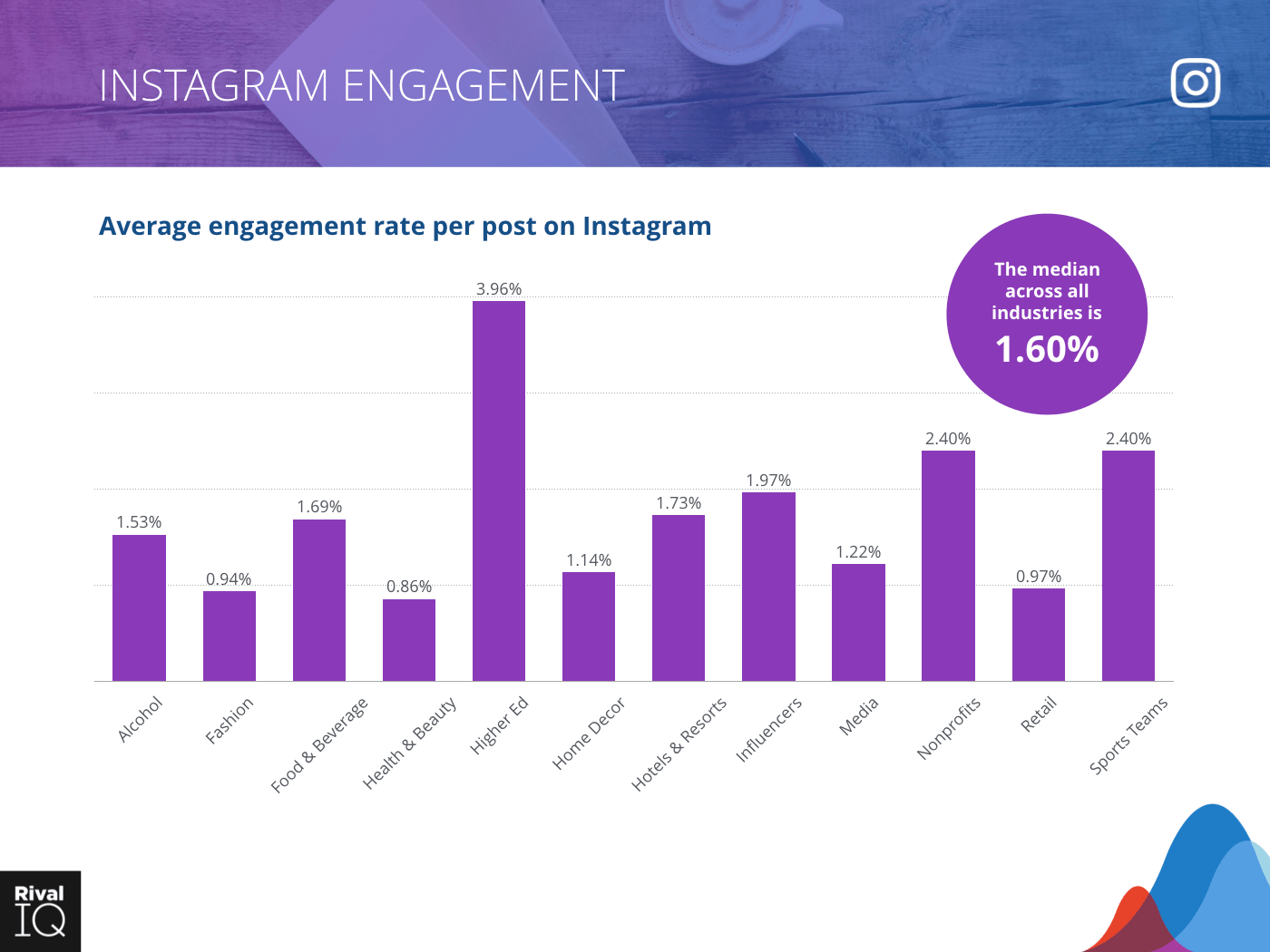How to Set Social Media Benchmarks
What’s in a social media benchmark? Why should you even set one? Or two? Or three?
“70% of BOTTOM-RANKING COMPANIES BASE DECISIONS ON GUT FEEL OR EXPERIENCE.”
Proving to your boss, and your boss’s boss, that your social media program works means showing the numbers. But without benchmarks, it’s hard to capture that success at a glance. Is 5% follower growth every month good? What does it mean when Facebook generated 3,000 URL clicks? Your program is not operating in a vacuum but competing against the industry as a whole and other individual brands.
Creating social media benchmarks and milestones allows you to easily explain how the program is performing. As social media is tracked against benchmarks, month over month and year over year, trends develop and lead to actionable details. There may be more engagement to be had in your industry. Your competitor may be doing better than you…why is that?
Benchmarks enable you to turn social media data into valuable insights. Make an impact on goals, rather than merely relaying the numbers. Let’s dive into:
What is a benchmark
Why you need benchmarks
What benchmarks you should analyze
How often you should look at benchmarks
How to create benchmarks
Benchmarking resources and tools
But what is a benchmark?
Benchmarking is the process of comparing your performance metrics to a baseline. In a nutshell, it helps remove the subjectivity when determining if what you’re doing is good enough. A number of resources will tell you that a benchmark should be the culmination of industry bests or best practices from another company. We like to develop benchmarks that are more robust and look at a more complete picture. Your brand is unique, and, oftentimes, there are many more factors that impact your performance and success than just a comparison to the industry or several other competitors.
We start with industry and competitor benchmarks and adjust them to account for individual program needs and achievements. This also helps tell the story of why a program is meeting standard averages (or why not).
Why do you need benchmarks?
We touched upon this at the beginning of this post, but said another way…benchmarks help you answer two crucial questions:
How is your program doing?
What can you do to improve performance?
What benchmarks should you analyze?
We’ve heard brands being given the advice to look at 36 different benchmarks. 36! We are all about the data here but that’s a bit much in our book. The majority of social media managers, don’t have the time to regularly look at that many benchmarks, let alone create campaign initiatives and strategies to affect the performance of those numbers.
Instead, we recommend focusing on top level engagement, website, and conversion numbers. Our top benchmarks are:
Follower Growth
Number of Engagements
Engagement Rate
Engagement Rate per Post
Your final benchmarks may look different depending on your program goals. We’ve worked with clients in the past that focus heavily on customer service. In these cases, we would might include Average Reply Time as a benchmark, as well.
How often should you look at benchmarks?
Analyze your benchmarks often enough that you don’t miss important opportunities to pivot your strategy but not so often that you get lost in the small details. We look at benchmarks and other metrics for our clients at the monthly, quarterly, half-year and yearly time-frames. This gives us enough time between reports to gather significant trend data and make concrete recommendations on what to do next around content, social promotion, influencer involvement, campaign initiatives, etc.
how to create benchmarks
Benchmarks are somewhat relative. More importantly, how you measure yourself against benchmarks is relative. We look at a number of different factors when determining the best metrics in order to get build a complete picture of the program and how it will realistically stack up against the industry and competitors.
Company goals — determining company and business goals should be the first step in figuring out exactly what benchmarks are relevant for your program. Are you focused on sales, newsletter signups, platform growth? What social channels will you focus on?
Past performance — analyzing previous performance will help your benchmark goals stay realistic. Understand what is aggressive but achievable. For example, a competitor may drive engagements in the tens of thousands while you see engagement in the thousands. It’s certainly possible to catch up but history will give insight in to how long it might take and what initiatives need to be rolled out. Organically growing to tens of thousands engagements may take too long based on the historical data and you may want to consider a paid spend.
Upcoming campaign and initiatives — do you have any major campaigns going live during the year? How will these affect your benchmark performance? Do you anticipate a spike in engagements that will help you exceed a benchmark in one quarter and subsequently meet that benchmark on a yearly basis? Ebbs and flows are natural.
Industry standards — what’s normal for your industry? Just like anything else in business, comparing yourself to non-relevant industries doesn’t help inform your social media strategy. Followers and audiences in the sports industry expect and respond to 3 posts per day but that would create audience fatigue in the fashion industry which averages less than 1 post per day.*
Competitors — what are your top competitors doing? And why are they doing better or worse than you? Determining where you are in the space and analyzing top competitors’ social media programs is an invaluable exercise that will inform a number of strategic aspects.
benchmarking RESOURCES AND tools
Just like any other aspect of social media management, there are a plethora of tools out there to help with benchmarking. The below are just a few of our favorite to get you started if you’re in the market. And don’t miss Rival IQ’s 2019 Social Media Industry Benchmark Report. It surveys over 1,800 brands across 12 industries and is a perfect starting place if you deal with Alcohol, Fashion, Food & Beverage, Health & Beauty, Higher Ed, Home Decor, Hotels & Resorts, Influencers, Media, Nonprofits, Retailers, or Sports Teams. (This is an unbiased and unsponsored opinion in case you were wondering).







